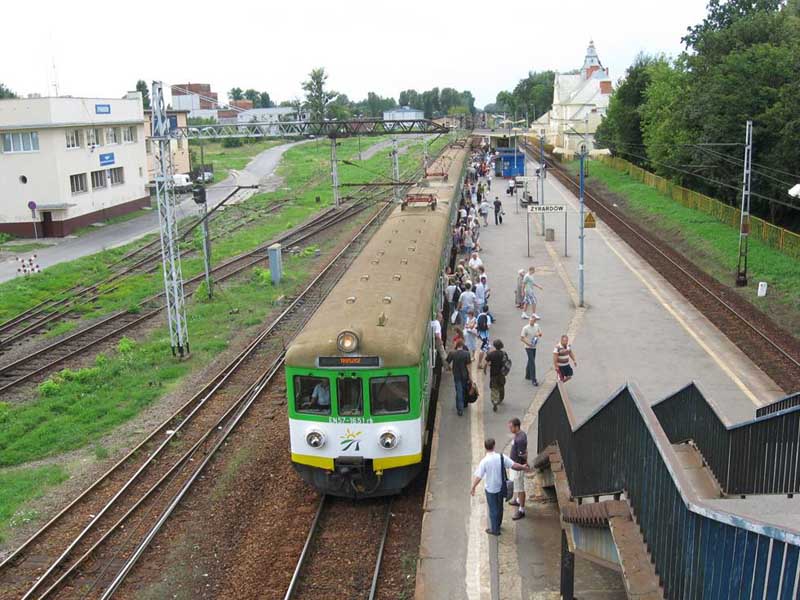Their work was conducted along two railway lines running through densely populated areas just south of Paris. The researchers surveyed vegetation at a total of 71 focal sites that were otherwise similar in their habitat features. They first looked for differences in plant community composition between the two lines; next, they focused within each single line in order to assess the similarity of plant communities across neighboring sites with and without "spatial breaks" (overpasses or train stations) between them. If railways help keep communities connected, then there should be greater plant community similarity among sites on a line than between the two different lines. Further, if this connectivity is disrupted by structures such as stations and overpasses, there should be greater similarity between sites that are not separated by these features.
The researchers also recognized that variations in plant dispersal technique might influence species' abilities to capitalize on the presence of railways--for instance, these routes might be more useful to species whose seeds are distributed by the wind than to those whose seeds simply drop straight down beneath the parent plant. Thus, all species were categorized as being highly mobile (wind pollination), moderately mobile (insect pollination, movement of seeds by animals), or poorly mobile (self-pollinating, seeds falling to ground beneath parent). Finally, each plant was assigned an "Ellenberg indicator value," which indicates its preference for particular light, temperature, moisture, and chemical conditions; since these vary with intensity of urbanization, the Ellenberg values help reveal species' sensitivities to anthropogenically disturbed environments.
(Some of the many methods of plant dispersal)
Across all sites, the scientists found 186 plant species, 95% of which were familiar from larger-scale biodiversity studies across the region. In general, floral communities were more similar within than between train lines, indicating that the railways were helping plants disperse amongst connected sites. Differences between and among lines were similar for invasive and wind-pollinated plants and for those whose seeds are transported in the guts of animals--likely because these species are already so mobile that the presence of the train route does not further improve their ability to spread.
Train stations did not have much of an effect on connectivity, but the presence of overpasses did: These structures generally reduced connectedness of neighboring sites. Again, wind-pollinated species and those whose seeds are dispersed in animal droppings were not significantly isolated by railway breaks, highlighting how effective these dispersal methods are at bridging the gap between distant habitat patches.
The degree of urbanization at each site was not a significant predictor of plant species richness or diversity. However, urban areas were more likely to have a higher number of invasive species, as well as having plants with Ellenberg values indicating a preference for high temperature and lots of nitrogen in the soil; urban areas also had fewer moisture-tolerant species. These results reflect the fact that urban habitats tend to be warmer, drier, and inundated with chemical runoff from anthropogenic products; species that can tolerate these conditions tend to do much better in disturbed environments like those along train tracks.
(A railway overpass)
On the whole, these results indicate that railway edges improve connectivity for urban plant species by allowing dispersal through hostile habitats. In fact, they appear to be especially helpful for much-beleaguered meadow species such as grasses and herbs. Surprisingly, and contrary to previous results, railways did not seem to promote the spread of invasive species; thus, managers may not have to worry about this negative side effect while reaping the rewards of railway connectivity. The benefit of edge habitats was dampened by the presence of overpasses, suggesting that urban planners might try to minimize use of these structures if they wish to improve conditions for floral communities in cities.
Alternatively, they might focus on modification techniques that could allow overpasses to become more useful. For instance, the authors suggest that these structures might be widened, deliberately planted with vegetation, or fitted with retaining walls so that seeds do not fall off before becoming implanted.
---
Penone, C., Machon, N., Julliard, R., and Le Viol, I. 2012. Do railway edges provide functional connectivity for plant communities in an urban context? Biological Conservation 148:126-133.
Thanks to the following websites for providing the images used in this post:
http://en.wikipedia.org/wiki/File:Jurong_KTMB_railway_line.jpg
http://www.arup.com/Projects/Railway_Line_No1/Railway_Line_No1_gallery1.aspx
http://www.field-studies-council.org/breathingplaces/food_for_us.htm



Awesome posts keep posting like this type of best content. Structural Consultants In Hyderabad provides you with quality structural design with a team of proficient structural Engineers. They are one of the best structural consultancies. They give you an innovative solution for all your requirements.
ReplyDelete